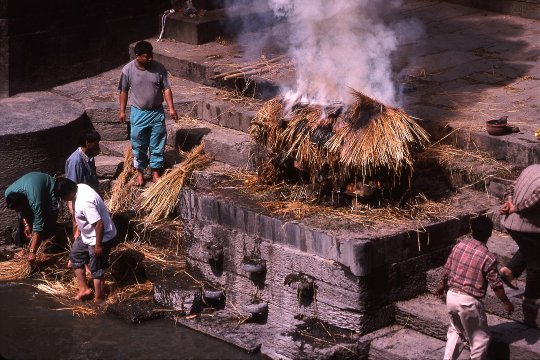|
John Tyman's Cultures in Context Series NEPAL RELIGION: Hinduism |
|
|
|
|
|
John Tyman's Cultures in Context Series NEPAL RELIGION: Hinduism |
|
|
|
|
 |
| 081. Brahma is said to be the source of the four castes -- the priests from his mouth, the warriors from his arms, tradespeople from his thighs, and servants from his feet. |
 |
| 101. After the body has been placed on the pyre, water, rice and ghee will be placed in the mouth of the deceased, and the pyre will be covered in damp straw to ensure a slow burn. |
![]()
Text, photos and recordings
by John Tyman
Intended for Educational Use
Only.
Contact Dr. John Tyman at johntyman2@gmail.com
for more information regarding
licensing.
![]()
www.hillmanweb.com
Photo processing, Web page layout,
formatting and hosting by
William
Hillman ~ Brandon, Manitoba ~ Canada